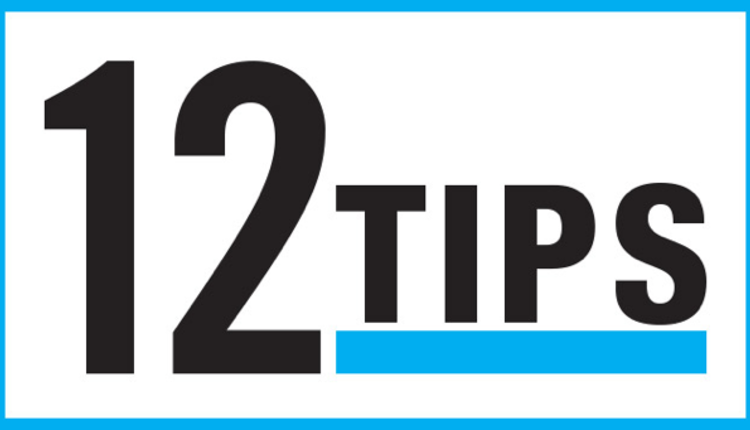
In a time where brand loyalty is shrinking and you are being judged in every single interaction with a customer, is it any wonder that organizations are constantly talking about competitive differentiation? Determining what attributes, servicing strategies and products set you apart can be the secret formula that gives you that razor’s edge ahead of your competitors. This can also include how agile businesses are in the face of change and market disruptors, such as digital technologies. Today, recognizing the traits for competitive differentiation, realistically assessing your capabilities while balancing those against the realities of cost and true collaboration with your partners, as efficiently and as quickly as possible, will really be the litmus test for your transformation.
For organizations that are strategically looking at transformation and competitive differentiation, the conversation quickly turns to the core competencies of the business. Leaders must ask if the business has the technology, talent and knowledge base to empower change effectively and quickly—before their competitors. So, if an organization views relationship-building and servicing as a competitive differentiator, what parts of the organization would they consider to be a core competency—a competency needed to execute the strategy? Many of our readers in the document management space would emphatically say that an organization’s documents and communications would most definitely be a core competency of such a transformation, and wouldn’t that make sense? These are core vehicles in which both—relationship-building and servicing—occur. Yet, many executive boardrooms would disagree, and many are considering outsourcing these functions. Why is that?
The decision to where best to invest your resources and then how to orchestrate these resources across your people, processes and technologies is not so straightforward. Contrary to what you might think, it’s not just driven simply by the common denominator of cost. Businesses today are grappling with reputational risk, compliance concerns, capabilities and talent resources, time to market and agility. What used to be predominately a cost-driven decision (26%, according to a 2015 KPMG survey on outsourcing for technology-related services) is now one that also closely looks at quality improvements (21%) and access to skills (19%).
Competitive markets and major digital disruptors (mobile, Internet of things, web, social, etc.) are propelling enterprises to really think about how well they balance their resources, cost and time to meet these changes and the transformation they seek. No matter where you are allocating your resources (inside or outside of the enterprise), I see collaboration as the agent of orchestrating this change across the business. However, managing these types of relationships and interactions is just as difficult as those with our external customers. Will your internal knowledge workers embrace new innovations and processes? Will your service providers prioritize for changing market demands? Moving beyond traditional services to true partnerships requires organizations to manage and prepare for these variables.
Every year, we provide you our annual list of HOT Companies in the document strategy marketplace, positioned to help you transform your processes and technologies. As you view our 2015 list (in our Summer issue), I hope that you will consider how collaboration with these service and technology providers will enable you to execute your transformation. If all of us—buyers, vendors and industry pundits—can rethink how we allocate resources, view partnerships and collaborate together in the face of change, we will truly be able to embrace the future. Our Summer issue is filled with challenges we face right now, from digital disruption, to customer experience metrics, to customer personas, but as you tackle your transformation strategies, don’t be afraid to really examine your resources inside your business and outside as well to give you that competitive edge we all are looking for.
Until next time,
Allison
For organizations that are strategically looking at transformation and competitive differentiation, the conversation quickly turns to the core competencies of the business. Leaders must ask if the business has the technology, talent and knowledge base to empower change effectively and quickly—before their competitors. So, if an organization views relationship-building and servicing as a competitive differentiator, what parts of the organization would they consider to be a core competency—a competency needed to execute the strategy? Many of our readers in the document management space would emphatically say that an organization’s documents and communications would most definitely be a core competency of such a transformation, and wouldn’t that make sense? These are core vehicles in which both—relationship-building and servicing—occur. Yet, many executive boardrooms would disagree, and many are considering outsourcing these functions. Why is that?
The decision to where best to invest your resources and then how to orchestrate these resources across your people, processes and technologies is not so straightforward. Contrary to what you might think, it’s not just driven simply by the common denominator of cost. Businesses today are grappling with reputational risk, compliance concerns, capabilities and talent resources, time to market and agility. What used to be predominately a cost-driven decision (26%, according to a 2015 KPMG survey on outsourcing for technology-related services) is now one that also closely looks at quality improvements (21%) and access to skills (19%).
Competitive markets and major digital disruptors (mobile, Internet of things, web, social, etc.) are propelling enterprises to really think about how well they balance their resources, cost and time to meet these changes and the transformation they seek. No matter where you are allocating your resources (inside or outside of the enterprise), I see collaboration as the agent of orchestrating this change across the business. However, managing these types of relationships and interactions is just as difficult as those with our external customers. Will your internal knowledge workers embrace new innovations and processes? Will your service providers prioritize for changing market demands? Moving beyond traditional services to true partnerships requires organizations to manage and prepare for these variables.
Every year, we provide you our annual list of HOT Companies in the document strategy marketplace, positioned to help you transform your processes and technologies. As you view our 2015 list (in our Summer issue), I hope that you will consider how collaboration with these service and technology providers will enable you to execute your transformation. If all of us—buyers, vendors and industry pundits—can rethink how we allocate resources, view partnerships and collaborate together in the face of change, we will truly be able to embrace the future. Our Summer issue is filled with challenges we face right now, from digital disruption, to customer experience metrics, to customer personas, but as you tackle your transformation strategies, don’t be afraid to really examine your resources inside your business and outside as well to give you that competitive edge we all are looking for.
Until next time,
Allison
Allison Lloyd serves as the editor of DOCUMENT Strategy Media. She delivers thought leadership on strategic and plan-based solutions for managing the entire document, communication and information process. Contact her at allison.l@rbpub.com or follow her on Twitter @DOCUMENTmedia.
















